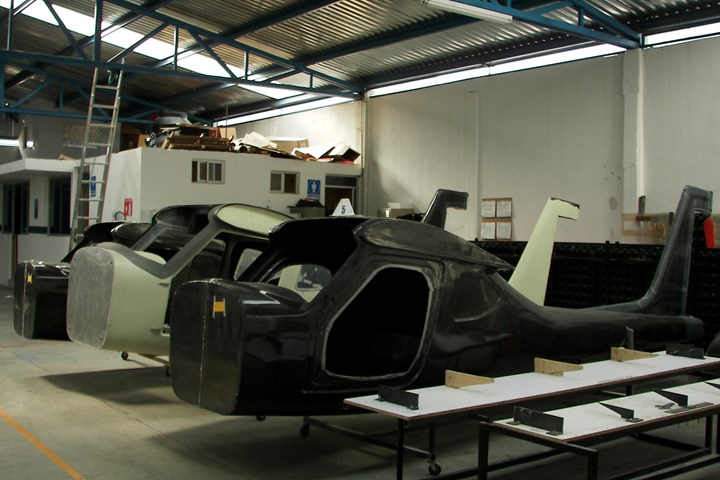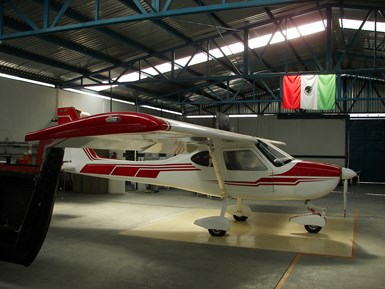Correction: First CFRP fuselage in Mexico was Stela-M1 trainer
Aeromarmi built an all-composite fuselage before RHEM Composites.

In my June 2020 blog, “First all-CFRP fuselage in Mexico”, I discussed how RHEM Composites (Querétaro, Mexico) and the Aeronautical University in Querétaro (UNAQ) helped to design and build the carbon fiber-reinforced polymer (CFRP) fuselage for the third prototype of Oaxaca Aerospace’s (Tlalixtac de Cabrera, Oaxaca, Mexico) Pegasus P-400T two-seat trainer jet aircraft.

The all-CFRP fuselage for the Stela-MI two-seat trainer aircraft and its development team at Aeromarmi.Photo Credit: Erik Vargas-Rojas
In response to that blog, CW reader Erik Vargas-Rojas wrote to correct me. “I would like to clarify one point concerning the construction of CFRP fuselages in Mexico,” he explains.“There was another first CFRP fuselage construction carried out for the two-seat Stela-M1 trainer, back in 2007, by the company Aeromarmi in San Luis Potosí, some 200 kilometers north of Querétaro.”
Vargas notes that Aeromarmi worked closely with several universities, including the National Polytechnic Institute in Mexico City. He included the following links which provide a scientific paper trail:
- "Numerical analysis with experimental data of the joint of fuselage with main landing gear and wing‐strut, of a two‐seat aircraft built with composites"https://onlinelibrary.wiley.com/doi/abs/10.1002/pc.23431
- "Review of the design process of a representative test specimen of a structural joint of a carbon‐epoxy aircraft"https://onlinelibrary.wiley.com/doi/abs/10.1002/pc.25079
- "Structural effect of staggered composite reinforcements within the firewall of an aircraft"https://www.revistadyna.com/search/structural-effect-of-staggered-composite-reinforcements-within-the-firewall-of-an-aircraft

Aeromarmi’s Stela-MI two-seat trainer aircraft.Photo Credit: Erik Vargas-Rojas
“The reason for my email is not to detract from RHEM Composites,” says Vargas. “In fact, their greatest accomplishment is that they started from scratch in the development of the Pegasus P-400TCFRP fuselage. Aeromarmi, in contrast, already had fuselage molds for the Stela-M1 because it was first developed in Spain. However, the production of three to four aircraft was completed entirely at San Luis Potosí during the next few years.”
I am glad to know this history about the development of composite aircraft in Mexico, and I am also glad that CW readers take our articles seriously enough to correct us. Thanks to Erik Vargas-Rojas and we all look forward to future composites — in aerospace and otherwise — being developed in Mexico. Stay tuned as we work to have at least one such story for you in 2021.
Related Content
-
The potential for thermoplastic composite nacelles
Collins Aerospace draws on global team, decades of experience to demonstrate large, curved AFP and welded structures for the next generation of aircraft.
-
The lessons behind OceanGate
Carbon fiber composites faced much criticism in the wake of the OceanGate submersible accident. CW’s publisher Jeff Sloan explains that it’s not that simple.
-
Sulapac introduces Sulapac Flow 1.7 to replace PLA, ABS and PP in FDM, FGF
Available as filament and granules for extrusion, new wood composite matches properties yet is compostable, eliminates microplastics and reduces carbon footprint.














.jpg;maxWidth=300;quality=90)

